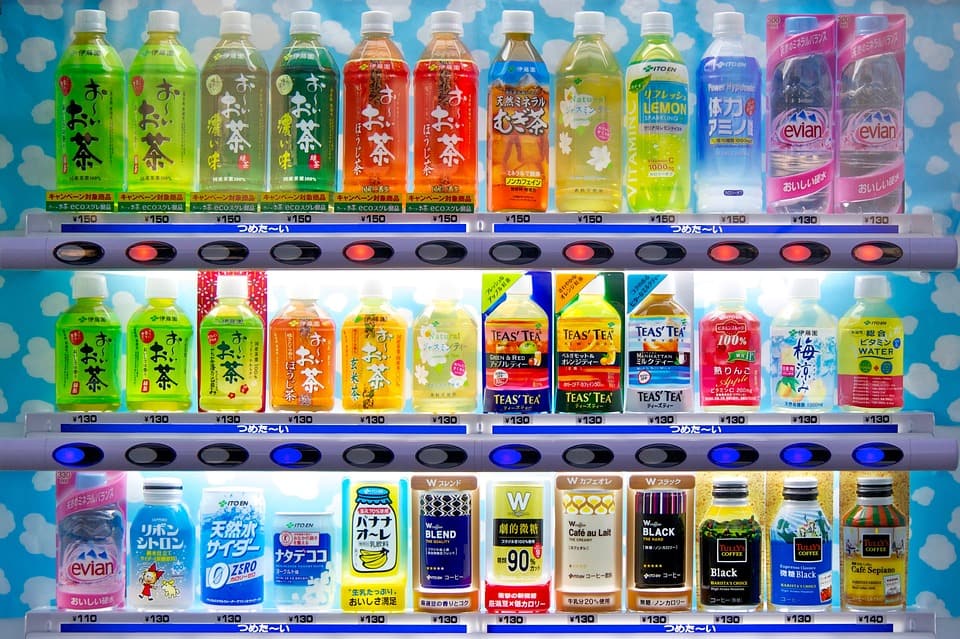
Summertime in Japan is incredibly hot and humid. If you come from a country that rarely experiences 30-degree-Celsius and 90%-humidity days, this type of weather can be agonizing and unbearable, and can make your trip less fun and enjoyable. Fortunately, there are many different ways you can deal with it and still make the most out of your trip.

A Look At Japan’s Summer Climate
Japan is made up of more than 6,800 islands that have varying summer climates.
The islands of Kyushu, Shikoku, and Honshu, for instance, have a temperate and humid subtropical climate. In summer, it is common for days to be very hot, with temperatures rising to the high 30s and humidity levels to between 80% and 90%.
Meanwhile, the island of Hokkaido has a cool humid continental to warm tropical rainforest climate. In summer, it is not as hot and humid as the southern islands, and its average daily temperatures hover in the mid 20s.
The table below shows the average weather conditions of some major cities across Japan during the summer months of June, July, and August:
| June | July | August | ||||
| Average Daytime | Average Nighttime | Average Daytime | Average Nighttime | Average Daytime | Average Nighttime | |
| Sapporo | 22 °C | 13 °C | 25 °C | 17 °C | 26 °C | 19 °C |
| Niigata | 24 °C | 18 °C | 28 °C | 22 °C | 31 °C | 23 °C |
| Tokyo | 26 °C | 18 °C | 29 °C | 22 °C | 31 °C | 23 °C |
| Osaka | 27 °C | 20 °C | 31 °C | 24 °C | 33 °C | 25 °C |
| Kyoto | 27 °C | 18 °C | 31 °C | 23 °C | 33 °C | 24 °C |
| Hiroshima | 25 °C | 18 °C | 30 °C | 23 °C | 31 °C | 24 °C |
| Fukuoka | 19 °C | 27 °C | 31 °C | 24 °C | 32 °C | 25 °C |
| Kagoshima | 28 °C | 21 °C | 32 °C | 25 °C | 32 °C | 26 °C |
| Naha | 29 °C | 25 °C | 31 °C | 26 °C | 31 °C | 26 °C |
For weather news and updates, visit the Japan Meteorological Agency website.
The 2018 Heat Wave In Japan
Japan’s summer this year has reached extreme levels once again. It has already led to several thousand cases of heatstroke and heat exhaustion, and, unfortunately, dozens of deaths too, forcing the authorities to declare it a natural disaster.
Over the last three months, more than 70,000 people across the country, including elderly people and school children, have been rushed to the hospital for symptoms of heat exhaustion or heatstroke. The death toll has also climbed to at least 77, 80% of which were seniors aged 65 years and older.
In recent weeks, historically-high temperatures have been recorded in certain parts of the country too. In Tajimi, a city in Gifu Prefecture, for example, a 40.7-degree Celsius day has been documented in the middle of July. Normally, its hottest days are in August, when temperatures rise to around 34 to 35 degrees.
The Japan Meteorological Agency has announced that the scorching heat should start to settle a little bit towards the middle of August, but still advises everyone to observe appropriate measures to lower the risks of heatstroke, heat exhaustion, and other heat-related illnesses.
Check out the Ministry of Environment’s information page on heat illness prevention to know what to do on your summer trip to Japan.
Tips To Survive The Japanese Summer
1. Hydrate.
Drink lots of liquids. Make sure to take a bottle of water or sports drink with you everyday to keep you hydrated. Take advantage of the abundance of vending machines and convenience stores across the country, and buy yourself a bottle or two as soon as you finish the last one. It only costs around 100 yen to 300 yen.

2. Wear breathable clothes.
Pack shirts, dresses, and other types of clothing made with thin, breathable fabric. When going out, it might be a good idea to keep an extra shirt or two in your daypack to have the option to change if you sweat a lot.
3. Apply sunscreen.
Prolonged exposure to the sun can lead to sunburn, so remember to apply sunscreen to your face, neck, arms, and other body parts before stepping out of your hotel. Anything with SPF 50 should be able to effectively protect your skin against the harmful ultraviolet rays of the sun. In Japan, you can find a wide variety of brands at convenience stores, drugstores, and supermarkets.
4. Observe proper personal hygiene.
During rush hours in the summer, crowded trains and buses can be a nightmare — it is like being trapped inside an oven, everyone is sweating a lot, and the air can be pungent with body odors. To keep yourself fresh, shower, brush your teeth, apply deodorant, and change your clothes everyday.
5. Get yourself a hat or a traditional Japanese fan.
When sightseeing, wear a hat or have a traditional Japanese fan handy. A hat can protect your eyes and face from the powerful rays of the sun, and a Japanese fan can help keep you cool.
6. Always bring a small towel or wipes.
Japan’s summer season can make you sweat more than ever. To not look too haggard after spending many hours outdoors, you can bring with you a small towel or wipes to dab on your sweaty face, neck, back, and arms. This will not only keep you looking clean but also feeling cool and fresh.
7. Spend more time indoors.
If you check the weather forecast and see that the temperature from mid-morning to late afternoon is going to be in the 30s, you should consider doing only indoor activities for the day. Ditch your hiking plans, and find an interesting museum or check out the air conditioned department stores and malls.
8. Treat yourself to some ice cream and other cold snacks and beverages.
At various tourist attractions in Japan, you will find small food shops and stalls nearby that sell ice cream, shaved ice, and other cold snacks and desserts. It is your chance to try unique flavors, like wasabi, sakura, squid ink, and miso soft serve ice cream.